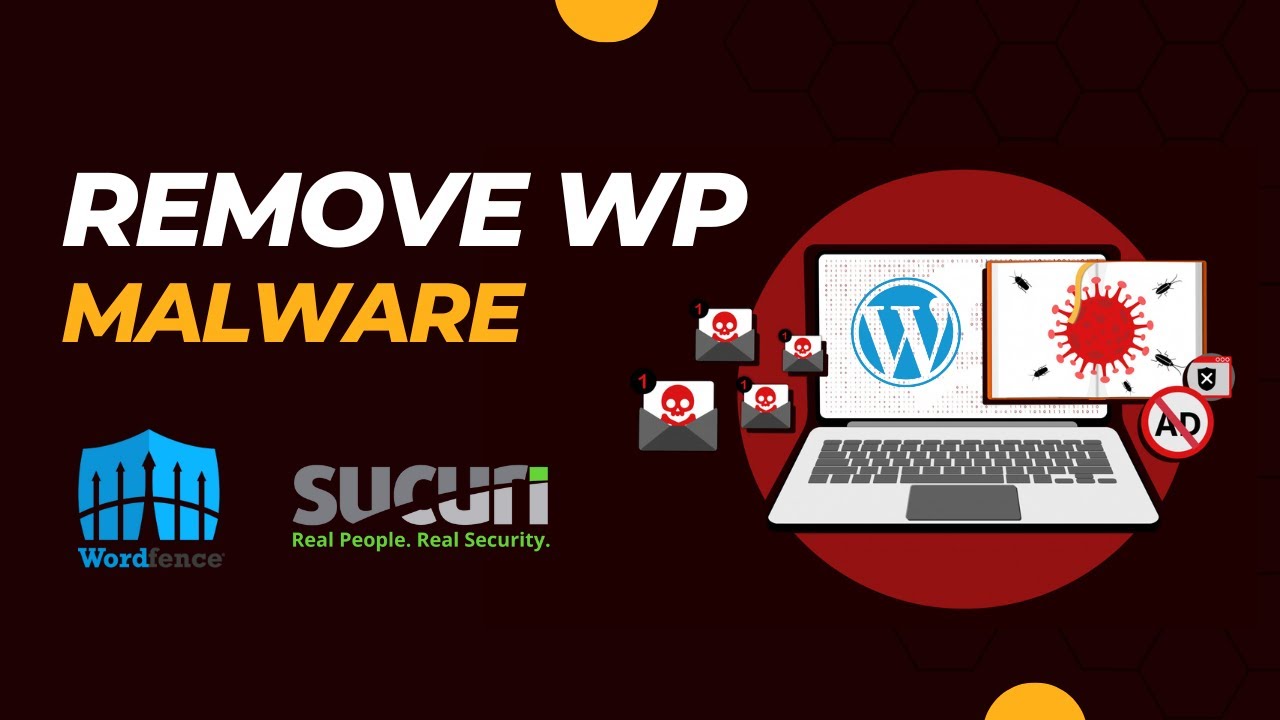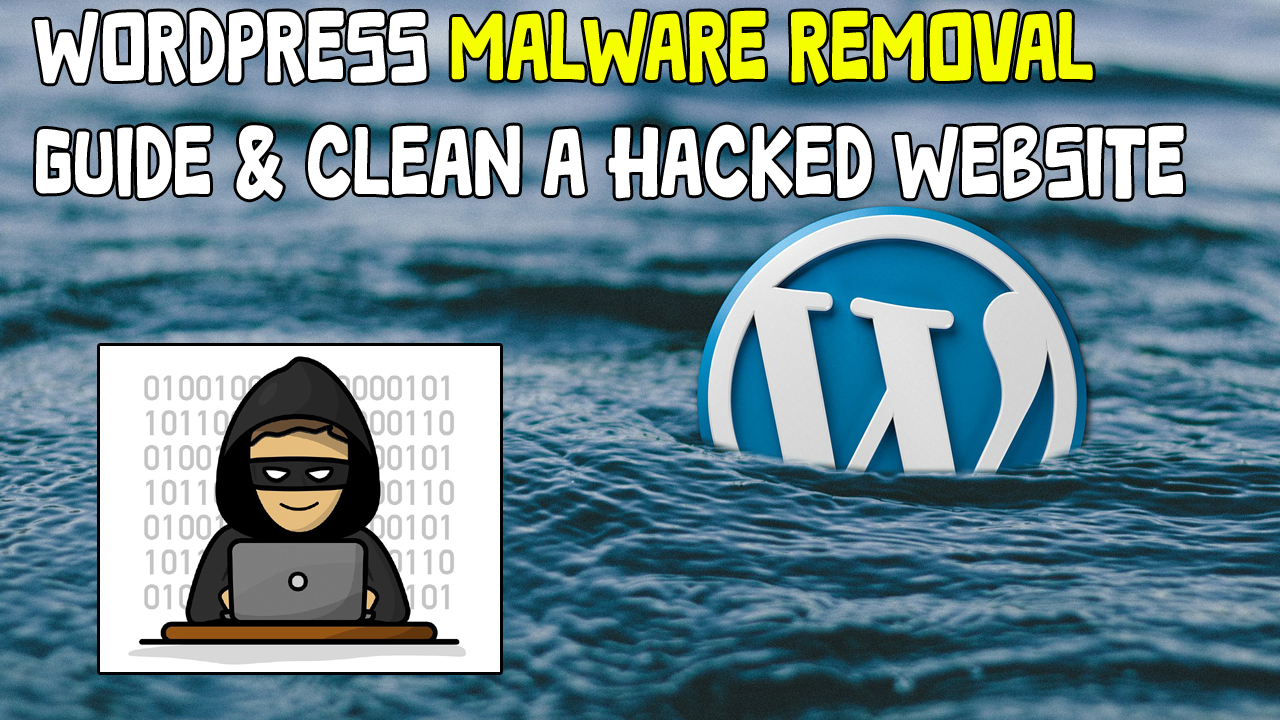Discovering your hacked WordPress website can be alarming, but fear not! In this comprehensive guide, we will go through the process of effectively cleaning your compromised website from malware. With step-by-step instructions and expert tips, you’ll regain control of your website’s security and protect your visitors from potential threats. We’ve got you covered, from identifying the hack to implementing security measures. Let’s explore the essential steps to restore your website’s integrity and regain peace of mind.
Do you need our company services to remove Viruses/Malware from the website?
If your WordPress website got attacked by viruses or malware it’s important to get help from our experts to fix it. Start by telling your hosting provider about the issue and ask if they can help with removing the malware. You might also want to hire a website developer who knows about WordPress and security to fix the problem. If you contact us for your work then we will fix it professionally and your website will never be hacked again in the future.
What our website experts will do?
NOTE: Only the professional will do this work because there is a 90% possibility of hacking again the website by malware/virus.
- We need your website cpanel/hosting login details.
- We first back up your whole website and save it into our drive.
- We will install fresh WordPress first and then again upload your theme & plugins with your uploaded media files.
- We will clean your theme all files because malware code is injected into the files and when we visit the website this code allows malware again to hack the website.
- When all suspicious code is removed then we back up again the files.
- after that, we will add some premium security plugins and these plugins will now allow any code to be injected again into the files.
- Before final payment, you can check the site in 3 days, and after 3 days you pay us the rest of the payment.
- I am 100% sure your website will never be hacked again with the malware virus.
Table of Contents

Identifying the Hack
In this section, we’ll explore common signs of a hacked WordPress website, such as unusual traffic spikes, unexpected content modifications, and suspicious user accounts. By detecting the hack early, you can minimize potential damage and prevent further complications. Additionally, we’ll share useful tools and plugins that can assist in identifying malware and compromised files quickly.
I know when you will be here on our website and you are in a critical situation to remove the malware or virus on your website.
If you want to clean your website permanently from malware/viruses so please read these 30 points carefully.
- Scan your website thoroughly using reputable antivirus and malware detection tools.
- Look for suspicious files, unexpected changes in code, and irregularities in website behavior.
- Before making any changes, ensure you have a recent backup of your website.
- Backup both the website files and the database.
- Temporarily take your website offline to prevent further damage and to protect visitors from potential security risks.
- Use a maintenance mode plugin if available.
- Ensure WordPress and all plugins are up-to-date to patch any vulnerabilities.
- Remove any unnecessary plugins or themes.
- Change all passwords, including admin accounts, FTP, and database passwords.
- Use strong, unique passwords to enhance security.
- Manually review and clean infected files identified during the scanning process.
- Replace compromised files with clean copies from your backup.
- Check the database for malicious entries or unauthorized changes.
- Remove any suspicious database entries.
- Review user accounts and ensure there are no unauthorized or suspicious accounts.
- Remove any unnecessary or suspicious user accounts.
- Verify and set correct file permissions for directories and files.
- Restrict permissions to the minimum necessary for proper functioning.
- Install and configure a reputable security plugin for ongoing protection.
- Set up firewall rules and intrusion detection systems if supported.
- Regularly monitor activity logs to detect and respond to any suspicious activities promptly.
- Use security plugins to log and alert on potential security threats.
- If your site was flagged by Google, use Google Search Console to identify and resolve issues.
- Submit a reconsideration request once the site is clean.
- Check the .htaccess and wp-config.php files for any unusual or malicious code.
- Remove any suspicious code and verify that these files are secure.
- Keep WordPress, themes, and plugins up-to-date to prevent future vulnerabilities.
- Stay informed about the latest security threats and best practices.
- Regularly monitor your website for any signs of unusual activity.
- Consider implementing a website firewall for added protection.
Immediate Damage Control
Once you’ve confirmed a hack, it’s essential to take immediate action to prevent further harm. We’ll guide you through the steps to create a backup of your website, isolate the infected files, and temporarily take your site offline to protect users. Quick and significant action is crucial to limit the impact of the hack.
Removing Malware from WordPress
In this section, we’ll investigate into the process of thoroughly cleaning your WordPress website from malware. We’ll explore manual methods to identify and remove malicious code, as well as the use of reliable security plugins. Understanding the details of the hack and employing effective removal techniques is main to ensuring your website’s safety.
Strengthening Website Security
Prevention is better than cure! Learn how to strengthen your website’s defenses against future attacks. We’ll cover essential security practices such as updating WordPress core, themes, and plugins regularly. Additionally, we’ll explain the significance of strong passwords, two-factor authentication, and limiting login attempts to thwart potential hackers.
Seeking Professional Help
When dealing with a hacked WordPress website, sometimes expert assistance is the best solution. We’ll discuss when and how to seek professional help, whether it’s hiring a specialized security service or a WordPress developer with experience in malware removal. Knowing when to call in the experts can save you time, money, and stress.
Regular Monitoring and Backups
Maintaining a secure website is an ongoing process. We’ll emphasize the importance of regular monitoring to detect any suspicious activity promptly. You’ll learn how to set up monitoring tools that notify you of potential security breaches, allowing you to take immediate action. Additionally, we’ll stress the significance of scheduled backups to ensure you always have a clean version of your website to restore in case of a future hack.
Educating Website Users
Often, security breaks occur due to user negligence or lack of awareness. In this section, we’ll discuss the importance of educating your website users about online safety. Encourage them to use strong passwords, update their devices regularly, and be cautious of suspicious links or emails. A well-informed user base can act as an additional line of defense against potential threats.
Staying Informed on Latest Threats
The world of cybersecurity is ever-evolving, and new threats emerge regularly. We’ll guide you on how to stay updated on the latest security trends and potential vulnerabilities specific to WordPress websites. Joining online forums or security communities can provide valuable insights and ensure you’re always prepared to tackle emerging threats.
Recovering from Google Blacklist
If your website was hacked, there’s a chance it could end up on Google’s blacklist, causing significant damage to your online reputation. We’ll explain the steps to identify if your site is blacklisted and how to initiate the recovery process. Restoring your website’s reputation is crucial to regain the trust of your audience and potential customers
Final Words of Encouragement
Cleaning a hacked WordPress website from malware might have felt like a difficult task at the beginning, but you’ve proven your patience and determination. Remember, you are not alone in this journey. The online community is vast, and resources are rich. Continue seeking knowledge and support to enhance your website’s security further.
Your commitment to maintaining a safe and reliable online space for your users is commendable. By staying proactive, you can prevent potential disasters and protect your hard work and investment.
As you move forward, never underestimate the significance of regular backups and updates. Consistency is key, and with each proactive step you take, your website becomes more secure and better prepared to face any potential challenges.
Keep learning, keep evolving, and keep thriving in the digital landscape. Your dedication to website security will not only benefit you but also inspire others to do the same. Together, we can make the internet a safer place for everyone
Implementing Website Firewall and Security Plugins

As you take the necessary steps to clean a hacked WordPress website from malware, it’s essential to fortify your website’s defenses further. One effective way to do this is by implementing a website firewall and security plugins.
Website Firewall
A website firewall acts as a protective barrier between your website and potential threats. It monitors incoming traffic and filters out malicious requests, preventing them from reaching your site. There are two types of website firewalls: cloud-based and server-based.
Cloud-Based Firewall
This type of firewall operates on a remote server and is managed by a third-party security provider. It can quickly identify and block various types of threats, such as Distributed Denial of Service (DDoS) attacks and SQL injections. Moreover, it often comes with automatic updates to keep up with the latest security threats.
Server-Based Firewall
Installed directly on your web server, a server-based firewall provides an additional layer of security. It enables you to have more control over your website’s security settings and configurations. However, it requires regular maintenance and updates from your end.
Security Plugins
WordPress offers a plethora of security plugins that can significantly enhance your website’s safety. Here are some popular ones:
Word fence: One of the most widely used security plugins, Word fence provides real-time threat monitoring, firewall protection, and malware scanning. It also offers login security features like two-factor authentication and login page CAPTCHA.
Sucuri Security: This plugin is renowned for its robust website monitoring and cleanup services. It includes security activity auditing, file integrity monitoring, and malware scanning. Additionally, Sucuri Security helps in hardening your WordPress website against potential vulnerabilities.
iThemes Security: Formerly known as Better WP Security, this plugin offers various features such as brute force attack protection, database backups, and strong password enforcement. It also has an option to hide the WordPress version to avoid potential attacks targeting known vulnerabilities.
Regular Updates and Maintenance
Regardless of the security plugins you choose, it’s crucial to keep them and your WordPress core, themes, and plugins up to date. Developers frequently release updates to patch security vulnerabilities and improve overall performance. Failing to update promptly can leave your website susceptible to attacks that exploit known weaknesses.
Using a Content Delivery Network (CDN)
A CDN can significantly improve your website’s performance and security. By distributing your website’s content across various servers worldwide, a CDN not only reduces loading times but also helps mitigate DDoS attacks by distributing the traffic across multiple locations.
Monitoring User Permissions
Limiting user permissions to only what is necessary can prevent potential attacks. Ensure that each user has the appropriate level of access and privilege based on their role. For instance, refrain from providing administrative access to users who only require basic contributor roles.
By implementing a website firewall, using security plugins, regularly updating your WordPress site, employing a CDN, and monitoring user permissions, you’ll create multiple layers of protection against potential threats.
Final Verdicts
Cleaning a hacked WordPress website from malware may seem scary, but armed with the knowledge from this comprehensive guide, you can confidently take action. Remember, early detection and immediate response are key to justifying damage. By following our expert tips and implementing robust security measures, you’ll create a tough defense against future attacks. Safeguarding your website and ensuring its smooth functioning is not only crucial for your business but also for the peace of mind of your visitors. Act now, and protect your online presence from malicious threats.

Dilshad Mushtaq is the founder and CEO of Best SEO Zone which is a prominent digital marketing agency based in Pakistan Since 2010. He is a professional website developer & Digital Marketer who can create any website and rank it on Google Page One.




